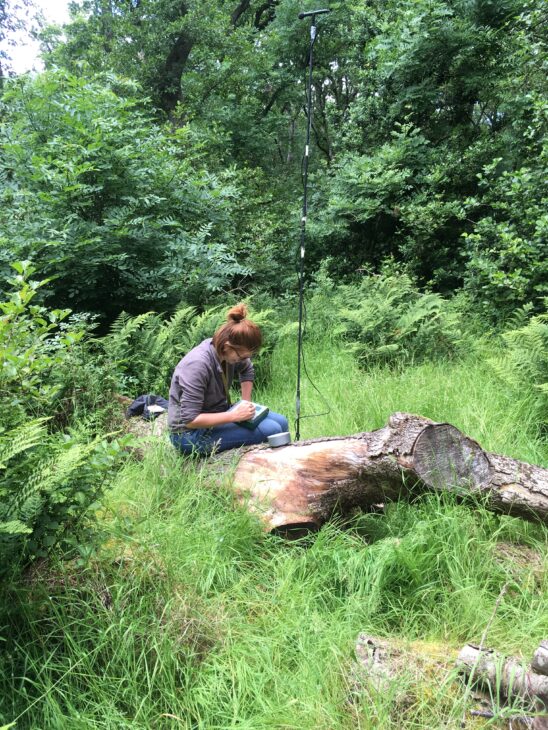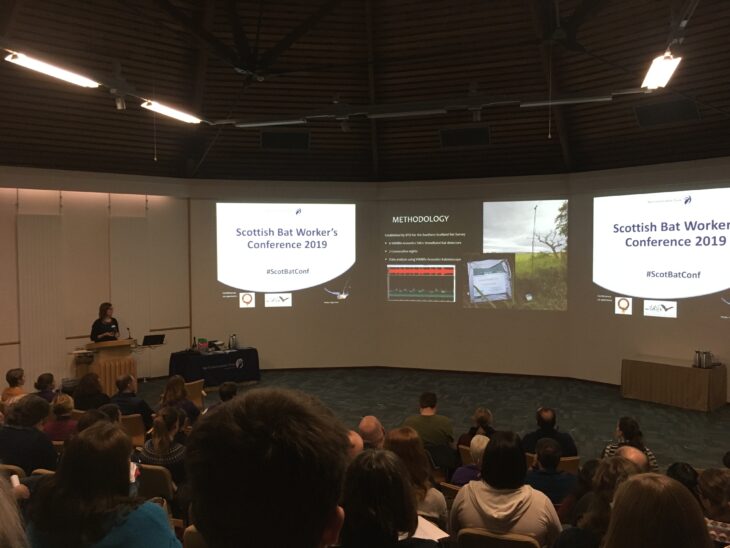The silence of the bats
During this past year I have had the opportunity to volunteer for Scottish Wildlife Trust taking part in the Erasmus+ European Voluntary Service. Part of this placement is to give us the opportunity to develop a variety of skills that will help us start a conservation career. To achieve this, we are given the opportunity to lead a personal project.
Before moving to Scotland I was volunteering in Normandy, France, on a similar kind of placement. There, I got the opportunity to assist with winter bat roost monitoring. It is an amazing feeling to crawl through the tiniest of holes to enter a completely dark and silent cave and see an extraordinary amount and variety of bats hanging from the walls and lodged inside cracks. This is what sparked my fascination with these wee creatures.
I decided that the subject of my project would be bats: an acoustic survey on two Scottish Wildlife Trust reserves in the Highlands. The Highlands are home to five species of bat: common pipistrelle (Pipistrellus pipistrellus), soprano pipistrelle (Pipistrellus pygmaeus), brown long-eared bat (Plecotus auritus), Daubenton’s bat (Myotis daubentonii) and Natterer’s bat (Myotis nattererii). A few less than Normandy’s 21 species, but no less interesting!
As not much is known about bats in the Highlands I thought it would be interesting to conduct an acoustic survey to determine which bat species are present on two different sites: Talich and Spey Bay Wildlife Reserves. When bats fly around and when they forage for food they use echolocation to orientate themselves in the dark. Although, silent to the human ear, these echolocation calls are a great way to identify species as they can be recorded to be analysed later on. Each species has a unique set of call parameters, called “sonograms”, allowing species identification. I deployed six SM2+ broadband bat detectors which recorded bat activity during seven consecutive nights on each reserve.

I analysed almost 10,000 sonograms! All the Highland species except for the brown-long-eared were found to be present on both reserves. This is exciting new data for the reserves management plans and contributes to existing data for these species, which may allow to understand a bit better their distribution in Scotland. The soprano pipistrelle had not yet been recorded around the Spey Bay area and the Natterer’s bat had not been recorded near either reserve. In fact, until now the distribution range for this species did not reach these areas.
I am very grateful for the opportunity to study these small mammals. I have learned a lot about their ecology and about the use of sound analysis as a survey technique. My study has yielded interesting results for Scotland something I was eager to share with my fellow bat enthusiasts at the Scottish Bat Workers Conference held in Perth last November, where I gave a presentation. I have also submitted an article where I talk about my results to the upcoming British Islands Bats Journal which will hopefully be published this spring.

Elizabeth Harwood
Elizabeth is taking part in a 12 month European Voluntary Service placement with the Trust funded by Erasmus+. She is working across wildlife reserves in the north of Scotland with Reserves Project Officer Michelle Henley.

Help protect Scotland’s wildlife
Our work to save Scotland’s wildlife is made possible thanks to the generosity of our members and supporters.
Join today from just £4 a month to help protect the species you love.
Preface
During this past year I have had the opportunity to volunteer for Scottish Wildlife Trust taking part in the Erasmus+ European Voluntary Service. Part of this placement is to give …
